My Husband Is Playing a Series of Dangerous Pranks on Me — I’m Scared of Being Near Him

April 12th in the Year 1912. It’s a great date for humanity: the 300th anniversary of the launch of the legendary Titanic. The best engineers of the world have collaborated for years to bring their masterpiece to the public: the Spacetanic. And they’ve done it just in time.
The glorious spaceship is waiting in its harbor under the limelight, photographed by thousands of people. The trip was scheduled for April 12, just like 300 years ago.
Finally, the big day has come. The passengers are going on board the most magnificent spaceship of the time — they call it unbreachable. It has 12 decks, from the third class closer to the bottom to the most luxurious first class on the top, with panoramic view of outer space.
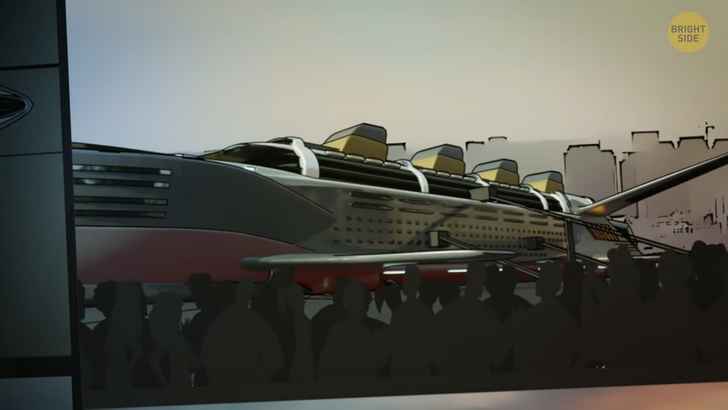
The ship is preparing for launch. The engines are starting, the final countdown has begun... and the Spacetanic is off into the sky. It quickly becomes no more than a speck in the big blue and then disappears.
The first day of the flight goes perfectly. The ship leaves the Earth’s atmosphere in less than an hour, and passengers enjoy the wonderful view outside: the blue and green planet on the backdrop of the black void of space.
The ship slows down a bit as it moves into the orbit: there are too many satellites and space debris circling around the Earth. The Spacetanic has to go carefully and maneuver around the chunks of metal floating in zero g. One of them heads straight towards the ship, but it turns on the side burners and moves out of the way just in time. The scrap floats safely by.
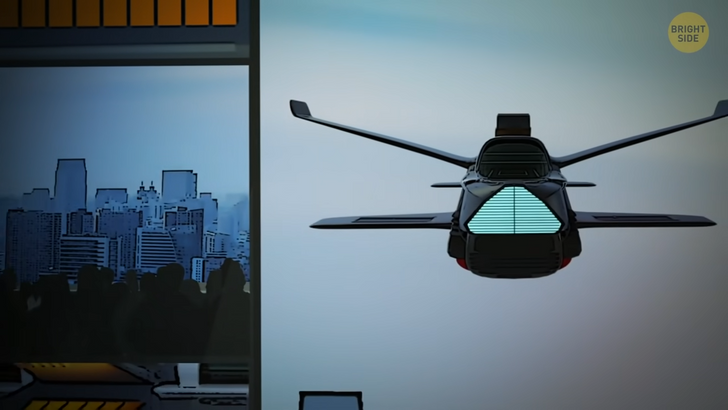
Finally, the ship is out of the danger zone and into the big black. It turns on the back thrusters to accelerate and heads to the bright side of the Moon. It’s going to be the first destination of the sightseeing tour.
The planet becomes gradually smaller behind, and about halfway to the natural satellite, people on board can marvel at the sight of the Sun. The huge ball of burning plasma is bigger and brighter than ever in the cosmic darkness. Suddenly, the ship’s captain makes an announcement: all passengers are invited to the promenade decks to watch as the solar panels are being unfolded.
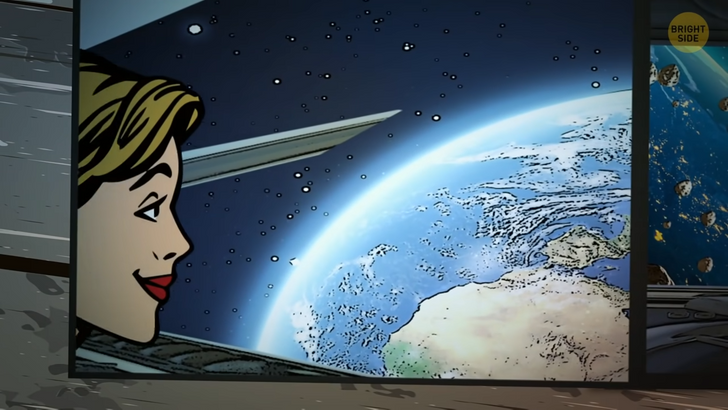
People go outside to goggle at the sight. The silver and black panels slowly emerge from their containment slots, and the Spacetanic finally takes its real form. As the Sun’s energy begins to flow into the ship, the thrust engines turn to minimum. The spaceship is now in energy-collecting mode: for the trip to Mars to take just a few days, it needs to make a transit jump.
In another 5 hours, a second announcement rings across the board: the ship is approaching the Moon, and the passengers are invited to look at the satellite from up close. The Spacetanic passes by at several thousand miles, and the Moon looks huge. All the craters on the satellite, even the smallest ones, are clearly visible. The view is outstanding.
The Moon is left behind, and lights on the ship go dim: there’s no natural change of day and night in space, so the crew monitors the time and imitates the shift. The next day promises nothing of interest as there’s going to be a long traverse between the Moon and Mars. The passengers are wandering off to their cabins to sleep.
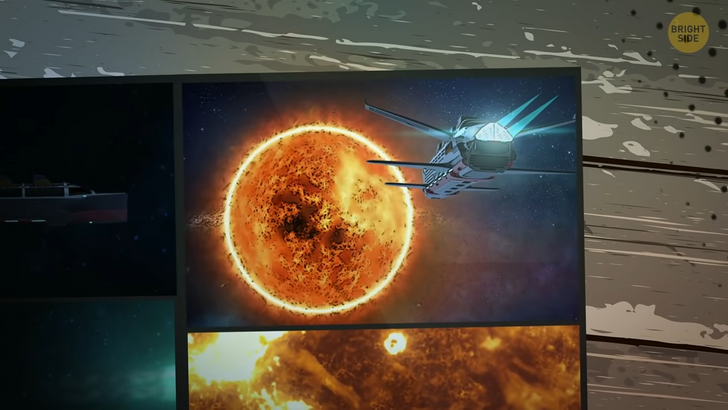
The next two days go uneventful. On the decks, there are numerous kinds of entertainment for guests, from gyms and swimming pools to game rooms and dancing halls. People wander around the promenade decks, enjoying the serene views of space. Nothing bodes trouble.
On the fourth day, the captain finally announces that the Spacetanic is preparing for the transit jump in 30 minutes. When the time comes, the passengers only feel a slight tug as the huge vessel leaps through space-time, entering the vicinity of Mars. Many passengers go outside to look at the red planet, which is already visible in the dark abyss. The tour is entering its final stage, but the landing is only planned for late night.
At 11 pm, when most passengers were already in their beds, the Spacetanic begins the final maneuvers: it has to make a little roundabout trip over Mars because the port is on the other side of the planet. Some of the guests can’t sleep and stand on the promenade deck, watching as the red soil slowly passes several thousand miles beneath them.
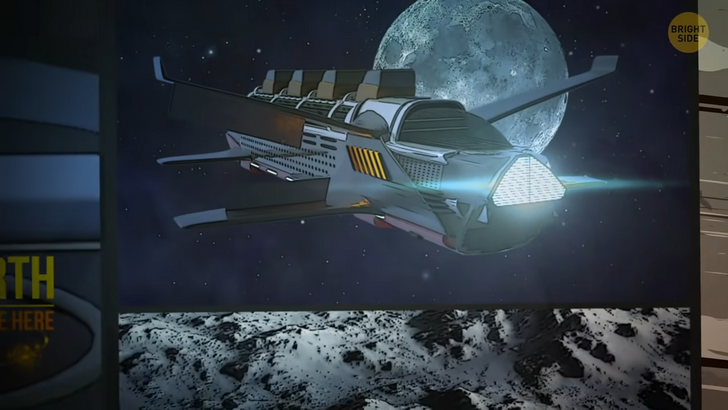
The flight is nearing its end, only a couple of hours left before landing. The ship is in the orbit on the far side of Mars. Everything’s quiet... too quiet. All of a sudden, an enormous boom thrashes the whole Spacetanic, throwing sleeping people out of their beds. Blinking emergency lights turn on, everyone’s confused, but no announcement comes from the captain. And only those who have been on the starboard-side promenade deck notice the horrible detail: the front right wing has been torn off and is zooming past them towards the stern.
Pressing their faces to the glass, straining to look at the hull, they see a huge gash near the nose of the ship. The Spacetanic shudders again, and chunks of metal fly out of the gaping hole — the ship rapidly loses pressurization. Meanwhile, the broken-off wing hit the stern and left another gash in it. Mechanisms in the engine compartment start to fall apart and are dragged into space. The ship groans and comes to a halt, suspended thousands of miles above Mars.
At last, the captain announces through the intercom that the Spacetanic has unexpectedly collided with a rogue asteroid. All passengers are asked to proceed to their respective decks for evacuation. Within an hour, all rescue capsules are occupied and ready to be deployed... but about a third of the passengers are still on board the ship. It turns out many of the capsules were blown away at the collision. The history seems to repeat itself.
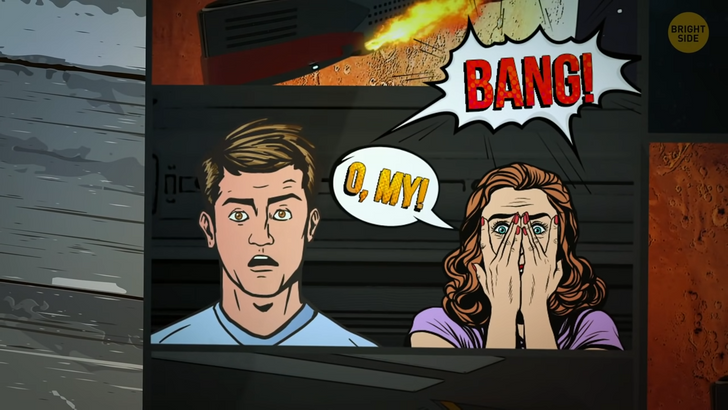
The captain still orders deploying the capsules, and they whoosh out from containment tanks, leaving hundreds of people behind. Some left without their family members, not knowing what fate awaits them. The capsules float in space for a few seconds and then turn on their thrust engines, heading to the Mars’ surface.
Another order from the captain: everyone is to go down to their cabins and put on pressurized suits under their beds. As the passengers rush to comply, the Spacetanic sends distress signals to Mars and everyone in the vicinity. A hundred thousand miles away, a large trade ship, Leonia, picks up the signal and hurries to help.
The creaks and groans on board the Spacetanic become more and more frantic. People are sitting silently in their cabins. It’s quiet on board except for the sounds of the slowly disintegrating ship.
And then, suddenly, a loud snap resonates throughout the Spacetanic, and the vessel cracks in two. A gigantic fracture goes from top to bottom almost perfectly halfway across the decks. Pressurized glass covering the promenade decks shatters into millions of pieces slowly flying away from the ship. With the decks depressurized, people and things are blown away into the outer space. Thankfully, all of the passengers and crew are wearing their suits as ordered, but they only have about an hour before they run out of oxygen.
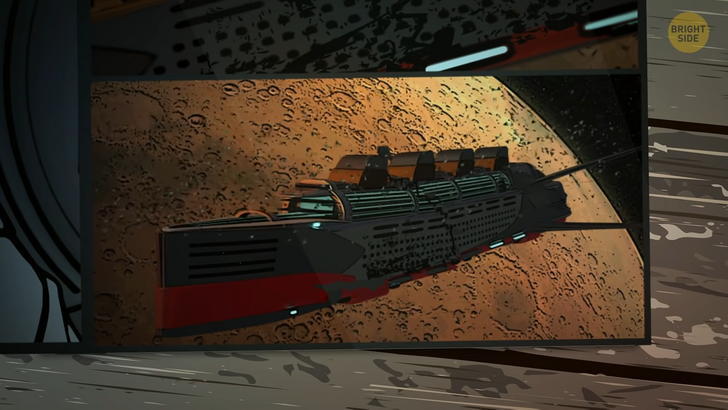
People help each other by floating together and hauling stranded ones to their groups. They can barely control their floating, but somehow they still manage to bring some order to the chaos. Huddled together in the dark space above the ominously red planet, they watch as the mighty Spacetanic turns into a heaping pile of space debris.
45 minutes have passed. The oxygen is running low, and people try to breathe as slowly and carefully as they can. There’s still no help in sight, and they’re preparing for the worst. But then, one of them starts waving and pointing somewhere.
It’s a bright spot, hardly different from the stars in far space, but it’s getting closer by the second. And within five minutes, the relieved people see a spaceship speeding towards them. The Leonia’s arrived just in time to save the day.
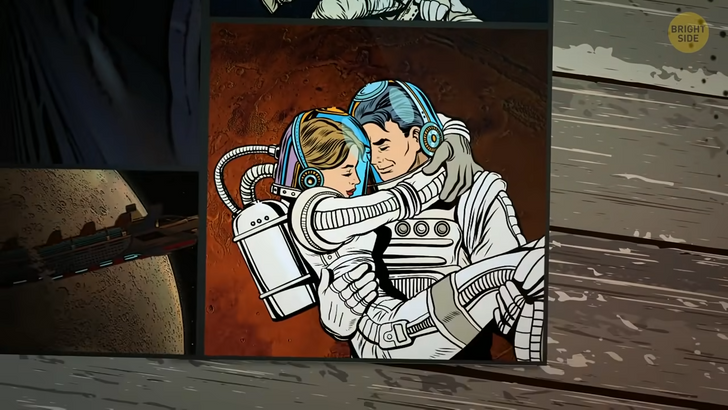
Quickly but without hurry, Leonia’s crew gathers everyone floating in space around the remains of the Spacetanic and haul them on board their ship. The last of the survivors had only enough oxygen for three more minutes.
In a few hours, the Leonia safely lands at Mars’ main spaceport. The newspapers called it the day when the Titanic sank again.











